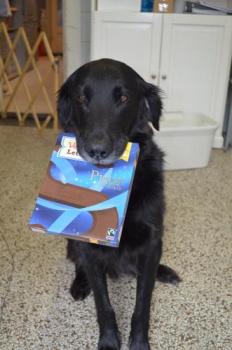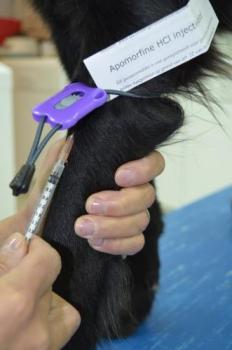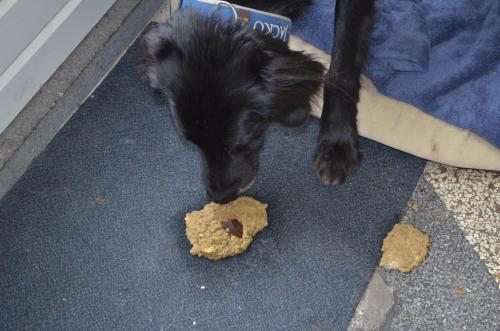The base of chocolate is made of cocoa. Cocoa contains, among other things, theobromide and caffeine. Both of these substances are toxic to dogs and cats. Many people think that what is safe for humans is safe for their pets. But this is unfortunately not true! Whereas people can process these substances quickly in the body, this goes very slowly for dogs and cats. There is then a build-up of these toxic substances in the body, with all possible consequences.
Symptoms:
Theobromide acts on the nervous system and the heart muscle, among other things. When an animal has ingested too much theobromide, the first symptoms can appear within four to 12 hours:
- Restlessness and nervousness
- Drinking and urinating a lot
- Vomiting
- Diarrhoea
- Behavioural changes
- Salivating
- Shaking
- Seizures
- Cardiac arrhythmia
Eventually, an animal may even fall into a coma and die. The above symptoms can occur singly, but also simultaneously. Older and very young animals are particularly at risk. In pregnant dogs, the unborn pups can die as a result of chocolate ingested by the mother.
Which type of chocolate is most dangerous?
The purer the chocolate, the higher the level of theobromide. Confectioner's chocolate usually also has a high content of theobromide. In addition, the body weight of the animal is important. A small dog will reach the dangerous limit more quickly. But a large dog can also become seriously ill from a small piece of dark chocolate. White chocolate, on the other hand, contains little or no theobromide.

What to do if your dog has eaten chocolate?
Contact your veterinarian as soon as possible. Please have the following information ready:
- The body weight of the dog
- The amount of chocolate eaten by the dog
- The kind of chocolate the dog has eaten (keep the wrapping!)
- The age of the dog (if not already known to the vet)
Based on this information, the vet will determine if it is necessary to come to the practice to have your animal vomit or empty its stomach. This will be done in most cases. Although the chocolate ingested may still be within the 'margins', chocolate poisoning is a tricky thing. Dogs have died from amounts that should have been 'safe' and there are dogs that did not suffer at all even though they ate the toxic dose. But of course we do not want to wait and see how an animal reacts to the chocolate. Once the chocolate has entered the body, there is nothing we can do but treat the symptoms, try to flush the substances from the body as quickly as possible with infusions and hope for a good outcome.

But if you are quick, we can make your animal vomit up the chocolate with a single injection up to a few hours after ingestion.
Please note! On the internet, it is often written that you can make your dog vomit by means of salt. Do not do this! Even salt in the wrong quantity can be toxic and even deadly (salt intoxication)!

Prevention is better than cure
It is better to prevent our pets from eating something that could be harmful to them. Do not leave bowls of (packaged) chocolate unattended on the table. Wrapped chocolate letters in the children's shoe or a surprise are no problem for most dogs to get hold of. With their sharp nose, they can smell where the chocolate is and it will be effortlessly tracked down and eaten.
Although chocolate is also dangerous for cats, they will not eat chocolate of their own accord. That is why we usually talk about chocolate poisoning in dogs. But the cat owner should also be aware of the danger of chocolate!

NB All the above photos are staged.